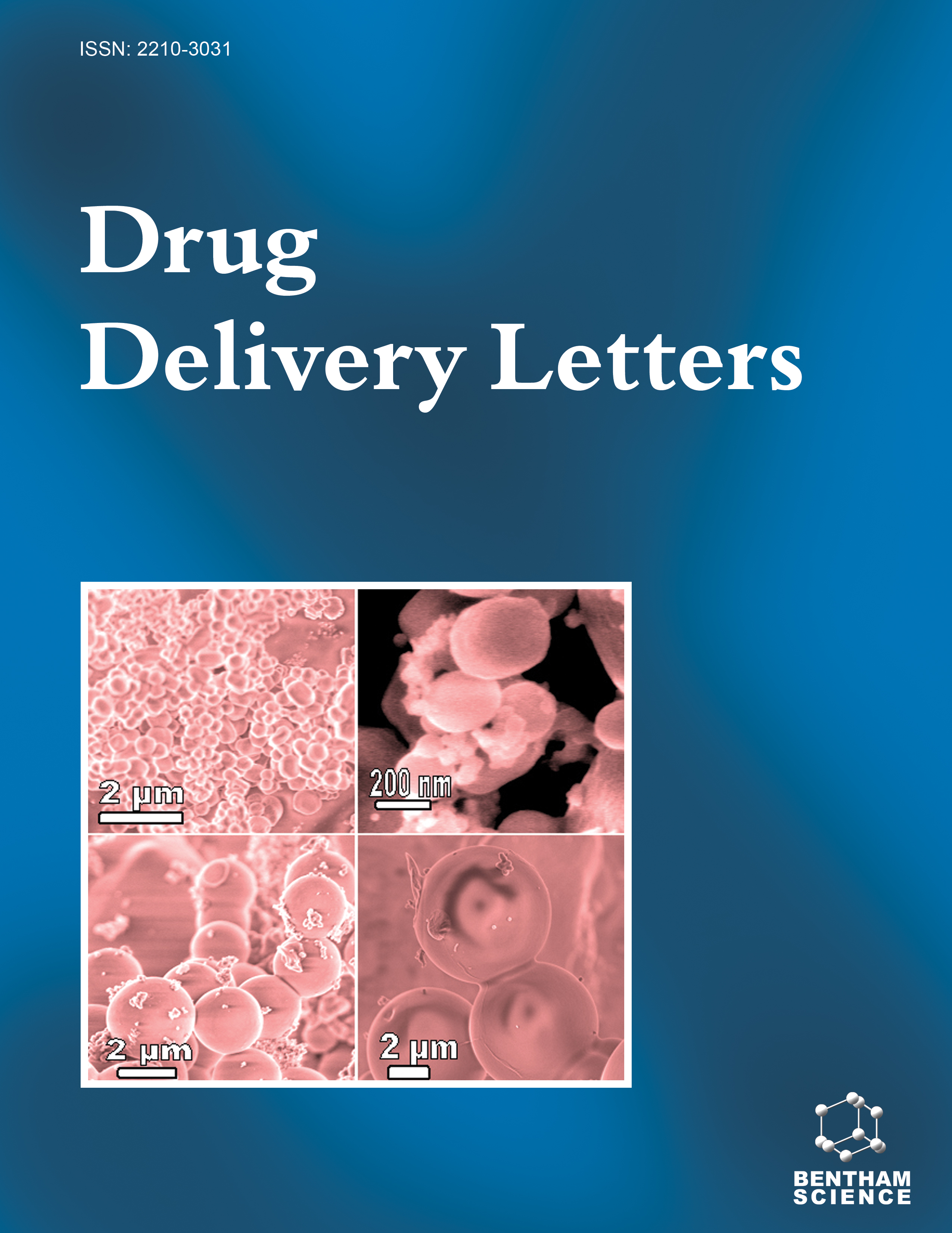- Home
- A-Z Publications
- Drug Delivery Letters
- Previous Issues
- Volume 10, Issue 4, 2020
Drug Delivery Letters - Volume 10, Issue 4, 2020
Volume 10, Issue 4, 2020
-
-
Insight into Delivery Approaches for Biopharmaceutics Classification System Class II and IV Drugs
More LessAuthors: Shashank Chaturvedi and Raghav MishraFormulation development of BCS Class II and IV drugs is a challenging task due to their poor solubility and permeability issue. An extensive literature survey was conducted to explore the relevant pharmaceutical approaches that have been used for solving the issue of poor solubility and permeability in the recent past. It has been found that a plethora of approaches have been investigated for addressing the issue of poor Read More
-
-
-
Review on Disease, Dose, Destination and Delivery Aspects of Simvastatin
More LessAuthors: Arpna Devi, Maninder Kumar, Mohit Kumar and Uttam K. MandalStatins are the choice of drugs for the treatment and management of hypercholesterolaemia because of their established lipid-lowering efficacy and safety profile. Among the various statins, simvastatin is a very popular antihyperlipidemic drug with pleiotropic effects that have a wide range of applications such as antioxidant, anti-inflammatory, antifibrotic effect as well as angiogenic activity. However, poor biopharmaceutical Read More
-
-
-
Nose to Brain Drug Delivery System: A Comprehensive Review
More LessAuthors: Pankaj Kumar, Varun Garg and Neeraj MittalNose to brain drug delivery system is an interesting approach to deliver a drug directly in the brain through the nose. Intranasal drug delivery is very beneficial because it avoids first-pass metabolism and achieves a greater concentration of drugs in the central nervous system (CNS) at a low dose. This delivery system is used for the treatment of various neurological disorders such as Parkinson's disease, Alzheimer's disease, s Read More
-
-
-
Solid Lipid Particle-loaded Ocimum Gratissimum Seed Films and Polymeric Films for Controlled Drug Delivery
More LessAuthors: Hang D. Mai, Phuong H.L. Tran and Thao T.D. TranAims: The purpose of this study was to investigate and compare the formation of polymeric and Ocimum gratissimum seed films containing solid lipid particles for controlled drug release. Methods: The hot homogeneous method was selected to form solid lipid particles containing sodium fusidate to load the drug into the film. The in vitro drug release and drug permeability of the films were tested with dialysis tubes and th Read More
-
-
-
Preparation and Evaluation of Polymeric Microparticles of Human Recombinant IL-1 Receptor Antagonist by Spray Drying
More LessAuthors: Anand Ubhe and Gerard G.M. D'SouzaBackground: Formulating protein drugs into delivery systems with high drug loading is particularly challenging. Another major hurdle for formulation processes generally used for protein drugs is their scalability. In this article, we present the application of spray drying to prepare polymeric microparticles of human recombinant IL-1 receptor antagonist (IL-1 ra). Objective: The objective of this study was to formulate polymeri Read More
-
-
-
Isolation and Characterization of Dillenia Fruit Mucilage: A Novel Polymer for Microspheric Delivery of Losartan Potassium
More LessAuthors: Santanu Chakraborty, Madhusmruti Khandai, Manami Dhibar, Shikha Yadav and Honey KumariObjective: The present investigation was aimed to isolate, characterize and establish a natural polymer obtained from partially ripe and fresh fruits of Dillenia indica and its utility to deliver losartan potassium in a sustained manner from microspheric macromolecular dosage form. Methods: All the microspheres were prepared by ionotropic gelation technique and investigated for various physico-chemical parameters along with i Read More
-
-
-
Development of a Scar Removal Ointment Containing Natural Active Ingredients
More LessAims: The present study aimed to evaluate the healing effect of five new dermal ointments made with natural ingredients, derived from the Ficus microcarpa fruit, Pulicaria odora L. leaf powder, vaseline, lanolin, and sweet almond oil on thermal burns of New Zealand rabbits. Background: Many natural ingredients are used as alternatives in topical burn wound treatments. However, the effectiveness of an ointment is primar Read More
-
Volumes & issues
Most Read This Month
Article
content/journals/ddl
Journal
10
5
false
en


